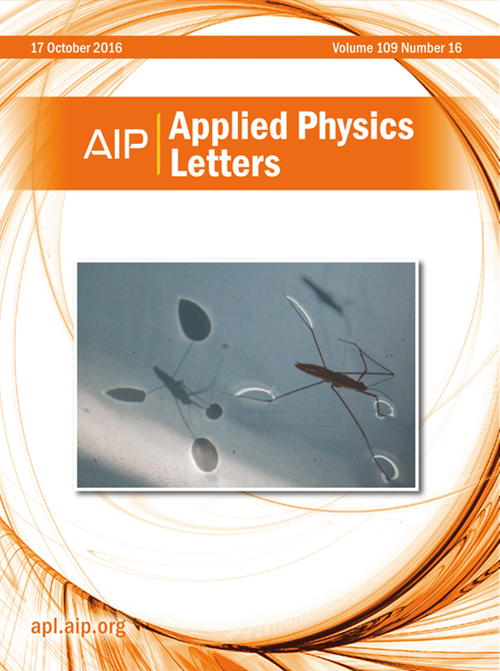用于单光子探测的掺杂驱动钨的鲁棒超导性
IF 3.5
2区 物理与天体物理
Q2 PHYSICS, APPLIED
引用次数: 0
摘要
元素超导体广泛应用于量子电子器件,为基础科学和革命性技术提供了同质的研究平台。然而,由于超低的工作温度和次优的稳定性,它们在超导电子学中的应用仍然是一个挑战。在这里,我们开发了一种氮掺杂策略来增强超薄非晶超导体的超导性,用于单光子检测。N掺杂诱导W的非晶化,导致超导转变温度从0.01 K提高到4.4 K (α-W)。此外,表面氮氧化物钝化层确保了晶圆尺度上光滑均匀的形貌,并为在6.0 nm厚的氮掺杂非晶钨(NAW)薄膜中制造纳米器件提供了强大的化学稳定性。因此,我们在1 K的工作温度下实现了量子效率饱和的基于naw的红外snspd。这种掺杂策略可以应用于更多元素超导体,从而促进它们在电子器件中的实际应用。本文章由计算机程序翻译,如有差异,请以英文原文为准。
Doping-driven robust superconductivity in tungsten for single-photon detection
Elemental superconductors are widely applied in quantum electronic devices, providing a homogenous research platform for both fundamental science and revolutionary technologies. However, their application in superconducting electronics remains a challenge due to the ultralow operation temperatures and suboptimal stability. Here, we develop a nitrogen-doping strategy to enhance the superconductivity of ultrathin amorphous superconductors for single-photon detection. The interstitial N dopants induce the amorphization of W, resulting in an enhanced superconducting transition temperature of 4.4 K from 0.01 K (α-W). Furthermore, the surface nitroxide passivation layer ensures smooth and homogeneous topography at the wafer scale and provides strong chemical stability for nanodevice fabrication in a 6.0-nm-thick nitrogen-doped amorphous tungsten (NAW) film. Consequently, we achieve NAW-based infrared SNSPDs with saturated quantum efficiency at an operation temperature of >1 K. This doping strategy can be applied to more elemental superconductors and, thus, promote their practical use in electronic devices.
求助全文
通过发布文献求助,成功后即可免费获取论文全文。
去求助
来源期刊

Applied Physics Letters
物理-物理:应用
CiteScore
6.40
自引率
10.00%
发文量
1821
审稿时长
1.6 months
期刊介绍:
Applied Physics Letters (APL) features concise, up-to-date reports on significant new findings in applied physics. Emphasizing rapid dissemination of key data and new physical insights, APL offers prompt publication of new experimental and theoretical papers reporting applications of physics phenomena to all branches of science, engineering, and modern technology.
In addition to regular articles, the journal also publishes invited Fast Track, Perspectives, and in-depth Editorials which report on cutting-edge areas in applied physics.
APL Perspectives are forward-looking invited letters which highlight recent developments or discoveries. Emphasis is placed on very recent developments, potentially disruptive technologies, open questions and possible solutions. They also include a mini-roadmap detailing where the community should direct efforts in order for the phenomena to be viable for application and the challenges associated with meeting that performance threshold. Perspectives are characterized by personal viewpoints and opinions of recognized experts in the field.
Fast Track articles are invited original research articles that report results that are particularly novel and important or provide a significant advancement in an emerging field. Because of the urgency and scientific importance of the work, the peer review process is accelerated. If, during the review process, it becomes apparent that the paper does not meet the Fast Track criterion, it is returned to a normal track.
 求助内容:
求助内容: 应助结果提醒方式:
应助结果提醒方式:


